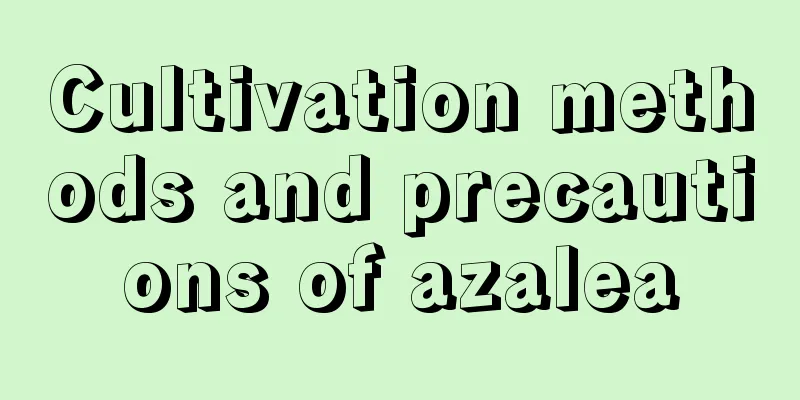Cultivation methods and precautions of azalea

1. Breeding methods1. Light: It is a light-loving plant, so it is usually placed in a place without direct sunlight. In the summer, the light is strong, so pay attention to shade it and avoid direct sunlight. 2. Watering: This plant likes moderate humidity. Do not water it too much, as it will easily accumulate water and cause root rot. Water it when the soil in the pot is dry. 3. Temperature: The temperature it adapts to most is between 15-28℃, and the minimum temperature cannot be lower than 5℃, otherwise it will stop growing. The maximum temperature should not be higher than 30℃, as it will enter a dormant period. 4. Soil: It prefers soil with an acidic pH. A mixture of leaf mold and garden soil can be used. This kind of soil is good for plant growth. 2. Precautions1. The soil in the pot should be moist, and you should not water it too much or too little. 2. Fertilization should be done in spring or autumn. Do not apply heavy fertilizer or raw fertilizer, otherwise it will burn the roots. |
<<: Cultivation methods and precautions of Begonia
>>: Peacock arrowroot hydroponic cultivation methods and precautions
Recommend
When do orchids bloom?
Orchid is a traditional famous flower in China, k...
Grape planting methods and techniques, how to grow grapes
1. Planting method 1. Planting time: When plantin...
When is the best time to prune Endless Summer?
Endless Summer Pruning Time Endless Summer can be...
How many varieties of orchids are there? Their names and pictures. How many types of the most common orchids are there?
There are many varieties of orchids, with a total...
Difference between star anise and fennel
1. Differences in plants Star anise is a tall tre...
Cutting propagation method of Haworthia striata
time Haworthia can be propagated by cuttings in b...
What are the cultivation methods and precautions for miniature coconuts?
How to cultivate miniature coconut The miniature ...
How to grow succulent flowers so that they can bloom
1. Choose the right variety If you want to grow s...
The difference between Huoxuedan and Viola yedoensis
1. Leaves The leaves of Dandelion are herbaceous,...
The effects and functions of perilla seeds, the side effects of perilla seeds
1. Efficacy and Function 1. Antibacterial: Perill...
Can Tiger Pilan be hydroponically cultivated?
1. Can it be hydroponically grown? Sansevieria ha...
How often does a cactus bloom?
1. How often should it be opened? Cacti are quite...
Differences between Palm and Bamboo
1. Different plant types The palm tree is a tall ...
Soybean planting technology and management methods
As an important oil crop in China, soybean is fam...
How to grow tiger skin plant
1. Light When caring for Sansevieria indoors, you...









